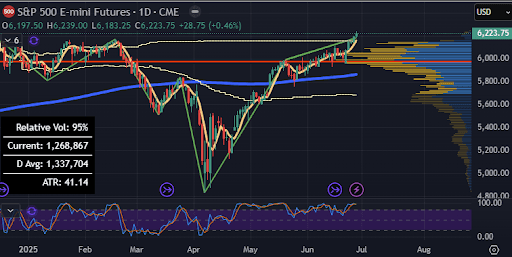Wall Street Reassesses Bull Market as Three Pillars Falter
Investors are confronting a coordinated unraveling of the assumptions that fueled the recent bull market, as rising industry leverage, shifting Federal Reserve signals, and uncertain fiscal tailwinds collide. The debate matters because it could reshape valuations in technology led sectors, change credit risk across data center financing, and determine whether growth expectations for 2026 are realistic.
Listen to Article
Click play to generate audio

The complacent narrative that supported the stock market rally is fraying on multiple fronts, forcing investors to weigh whether gains driven by lofty revenue forecasts, cheap financing, and calendar year optimism can persist. CNBC highlighted how the three core premises behind the bull market are now under question, sparking a reappraisal of risk across equities, credit and the broader economy.
One premise at risk is the assumption that future revenue trajectories are sufficiently certain to justify high current valuations. Analysts and portfolio managers are demanding firmer evidence that growth projections will translate into the returns investors expect. That recalibration has been most visible in the technology sector where AI related high flyers have seen abrupt selling pressure. Quantitative strategies from established groups such as Renaissance have been cited as sources of anti momentum amplifying moves in those names.
A second worry is the industry wide increase in debt to finance data center expansion and other capital heavy investments. Market participants say that the surge in leverage for such infrastructure echoes earlier credit excesses, reviving memories of past ruptures in funding markets. This mounting reliance on borrowed money raises the stakes for credit spreads and could force asset writedowns if revenue misses materialize or financing conditions tighten.
The third foundational belief under strain centers on central bank policy. For months the consensus held that the Federal Reserve would gradually trim rates toward a lower neutral level to guard against labor market deterioration. That expectation has been shaken by a string of hawkish messages from Fed officials which have cast a cut in significant doubt. Several voting members have signaled resistance to endorsing a rate cut at the December 10 meeting, prompting a rapid repricing of Fed policy expectations and leaving Wall Street in suspense as economic data resumes now that the government has reopened.
Complicating the outlook is a fiscal narrative that many had hoped would rescue 2026 growth. The new fiscal package is projected to generate higher income tax refunds in the first quarter, and what started as a little noticed point has quickly become central to the idea that 2026 could be a clean year for macro conditions. That story has moved from nobody is talking about this to everyone is banking on this, a fragile shift that magnifies the downside if timing or magnitude prove off.
The broader economic context reflects longer term trends that have already reshaped distributional outcomes. The notion of a K shaped economy favoring asset owners over moderate wage earners has become a cliché, but it remains relevant to interpretation of policy and market signals. If the Fed refrains from cutting, or if credit stresses surface in technology capital chains, growth forecasts anchored on concentrated gains in high margin sectors could falter.
For investors and policymakers the immediate questions are practical. Will a lack of a December rate cut become viewed as a policy blunder, tightening financial conditions at the wrong moment, or will it be judged prudent to avoid reigniting inflation? And can fiscal timing provide enough of a counterweight to keep the 2026 growth narrative intact? In the coming weeks the answers will emerge from incoming data, Fed communications, and the evolving dynamics of credit in capital intensive industries.


